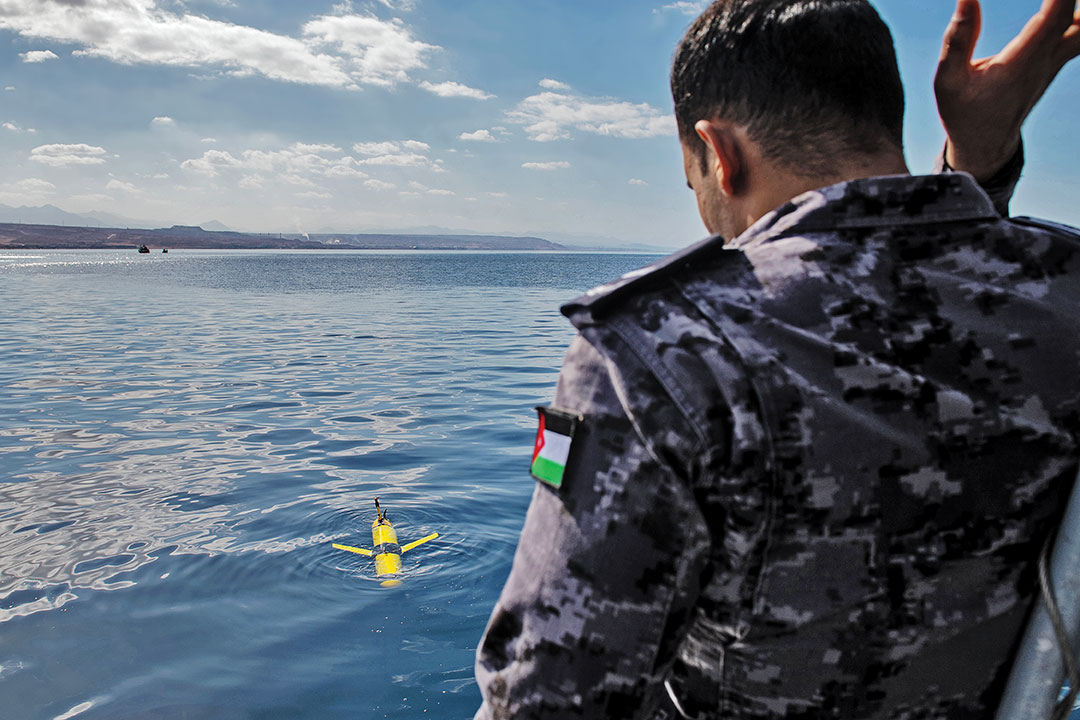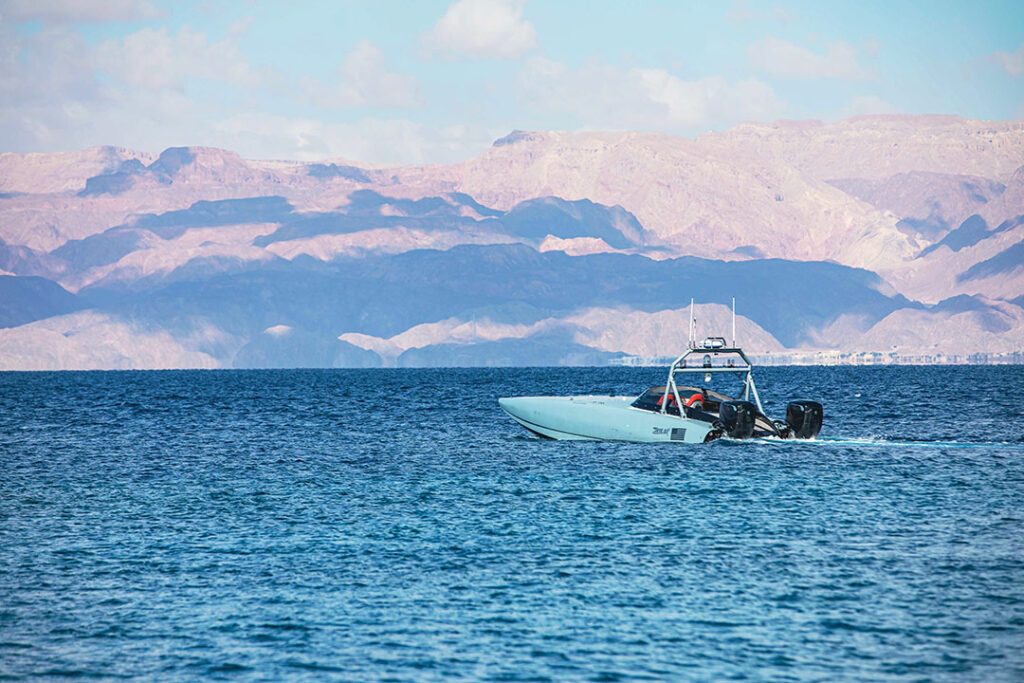JORDAN ARMED FORCEs DIRECTORATE OF MILITARY MEDIA
The Jordan Armed Forces-Arab Army is an essential pillar of the Jordanian national security system and the most important element of the state’s power. For this reason, His Majesty King Abdullah II ibn Al Hussein has given his full attention and care to the Armed Forces from the moment he first assumed his constitutional powers, so that it keeps pace with the times in terms of weaponry and training.
The Royal Jordanian Navy’s Royal Boats Command Development Plan was drawn up to meet His Majesty’s vision of creating an advanced, agile, highly effective and combat-ready naval force capable of carrying out its duties and keeping pace with changes in the strategic environment to defend Jordan’s sole seaport of Aqaba, vital to the development of Jordan’s economy.
As part of Jordan’s commitment to maintaining global and regional maritime security, the Royal Jordanian Navy introduced technologies integrating artificial intelligence with unmanned systems and opened the Jordanian Center for Unmanned Systems (JROC) in September 2022, enhancing the Royal Jordanian Navy’s monitoring and reconnaissance capabilities in regional waters and on the high seas. It’s commonly referred to as the Robotics Center. Through its creation, the Red Sea will also witness a dramatic improvement in detection and deterrance.
The JROC operates alongside the Marine Operations Center. The functions and services of the robotics center can be summarized as detection and deterrence by collecting and linking data received from unmanned marine systems deployed at sea. This data is then used to build a database, called Pattern of Life in marine science. This data can then be analyzed and used to develop deterrence, defense and threat neutralization operations. Prior trials have also proved the utility of these systems for other purposes, such as casualty evacuation operations.

Although the JROC was established only recently, linking the Robotics Center with the Marine Operations Center provides us with data beyond our traditional capabilities. It also provides a vast record of ship movements and sightings in areas of interest beyond our territorial waters.
We are on the verge of a technological revolution in unmanned equipment. The Jordan Armed Forces realized this early and is constantly working to employ these systems for surveillance and reconnaissance in our skies and seas (both surface and subsurface). The Royal Jordanian Navy actually introduced underwater surveillance technology when it started using remotely operated vehicles (ROV), before the JROC was established. Marine drones are used for round-the-clock patrols. This has enhanced our ability to monitor the movement of ships to and from our territorial waters. These vehicles have also operated beyond our territorial waters to participate in mixed joint exercises to help identify potential threats. This is the case with all units of the Jordan Armed Forces that use unmanned systems.
All of these innovations represent a close Jordanian-U.S. partnership. The most important reason for this is the U.S. Navy’s global experience in maritime operations and the presence of U.S. Naval Forces Central Command/U.S. 5th Fleet in the Middle East. This is in addition to the active role of the Royal Jordanian Navy in the command of the U.S.-led Combined Maritime Forces (CMF).
Jordan, through the Royal Jordanian Navy, has been an active member of this alliance since it was established in 2008. This participation has underscored the effective role played by the Royal Jordanian Navy and presented it in the best light. There is no doubt such participation has contributed to maintaining international maritime security and helped to develop the ranks of the Royal Jordanian Navy. This is achieved through the exchange of expertise with coalition countries and exposure to the operations and command of international maritime forces.
The Royal Jordanian Navy, in partnership with the U.S. Naval Forces Central Command, supported the formation of Task Force 59, which is responsible for surveillance, reconnaissance and information-gathering operations using technology that integrates artificial intelligence systems and remote-controlled devices. Jordan plays an active role in regional and international maritime security. This is why the JROC was established.
When it comes to modern technologies, Jordan was one of the first countries to use these. Close ties, partnerships, friendship and shared leadership are the foundations that should govern relations between friendly states. Our naval forces are committed to supporting the rules-based international order and are leading the way for us to become a more capable and effective force, one that we can command jointly. This is why we support all concepts that help maintain regional and global maritime security. The decision whether to use a given technology is up to each individual country. It is worth mentioning, however, that several friendly countries have sent officers to participate in training on unmanned systems.
The main requirements of this training are the ability to read and analyze data from unmanned systems, familiarity with a variety of technologies and techniques, and English language proficiency.
Jordan itself benefits from training with partners because it’s new to the field of unmanned systems. Training and qualification on unmanned vehicles are mostly carried out in-country, but some of our personnel have also been sent to the U.S. for training on the use of unmanned underwater cameras in addition to a number of training exercises on unmanned maritime systems inside and outside the kingdom. The first Jordanian female naval officer in the field of robotics is a graduate of the U.S. Naval Academy.

